The consumer journey used to begin with intent. A need arose, a search began, and brands vied for attention on the results page. That digital arena, structured around keywords, ads, and SEO, rewarded whoever best spoke the search engine’s language. That model is losing ground.
AI is altering not only what consumers see but also how they seek. Search is giving way to suggestion. Generative AI tools such as ChatGPT, Google’s SGE, and TikTok’s algorithmic feed replace active intent with passive input. Type less. Scroll more. The funnel is fading.
In this new model, over half of consumers prefer product suggestions from generative AI rather than search engines. Nearly seven in ten say they’re ready to act on them. What once required comparison and evaluation is increasingly instant and unexamined.
The implications for brands are structural. Visibility is no longer won on a search results page. The new battleground lies inside opaque recommendation systems, where influence depends on what the algorithm surfaces, not what the consumer seeks.
When Search Becomes Suggestion
Once, the journey began at the search bar. Now, it starts within the logic of a machine. More and more choices—from headphones to holidays—emerge not from exploration but from a feed or prompt. Curated results appear from systems trained on data the consumer never sees.
This isn’t hypothetical. In the past year, 58 percent of global consumers have begun using generative AI for product recommendations, according to Capgemini. In the UK, 37 percent of under-40s now use AI for more than half of their searches. In the US, it’s 32 percent. The expectation isn’t to browse. It’s to receive, instantly and with zero friction.
Even when consumers still use search engines, their behaviour has shifted. Google’s Search Generative Experience now places AI-generated summaries above all other results.
According to Adobe, in 75 percent of cases, these overviews end the search then and there. Users find what they need without ever visiting a brand’s site. Visibility, once a matter of rankings and backlinks, is now defined by what the machine considers relevant.
For brands, this changes the calculus. Winning a keyword no longer guarantees visibility. If your product is not named in the AI’s shortlist, you do not exist. Recipe platforms have already felt the impact. In late 2024, traffic fell sharply as AI began answering holiday cooking questions outright. Only brands that were directly cited, such as Allrecipes, maintained strong engagement.
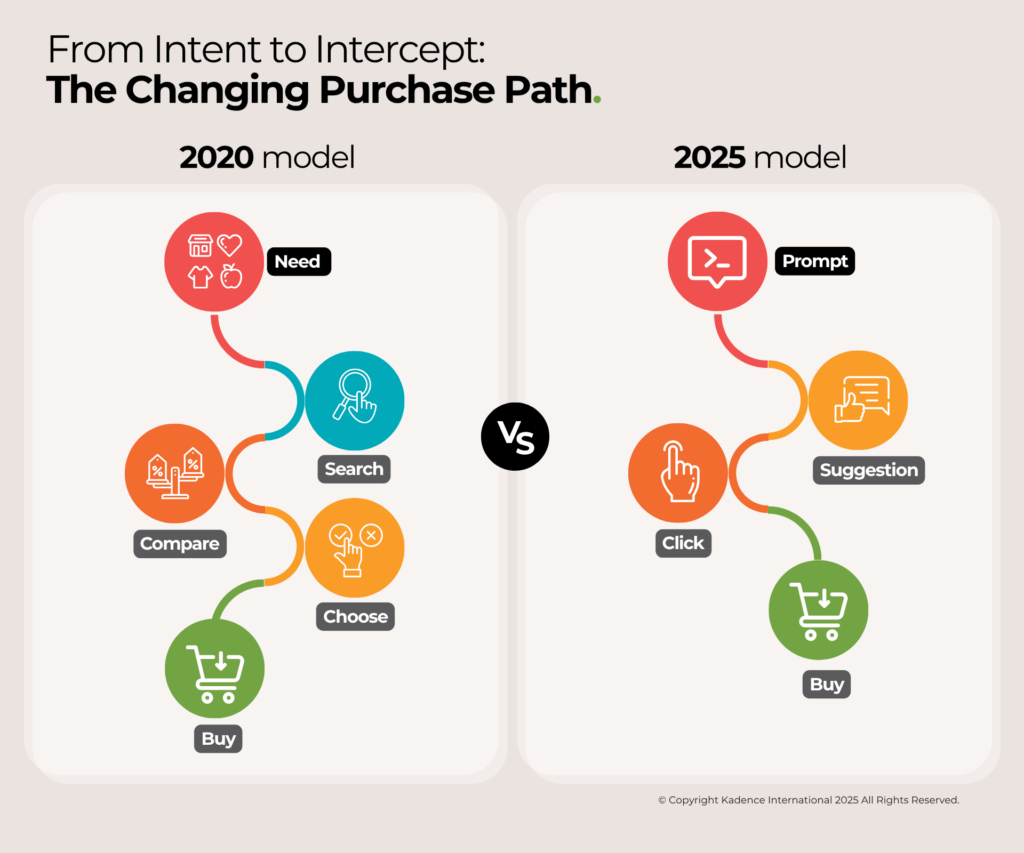
The Vanishing Middle
The old journey had a rhythm. Awareness led to research, research to comparison, and comparison to choice. Each step allowed brands to step in, whether through ads, testimonials, or product pages. That middle ground is disappearing.
Instead of reading dozens of reviews, consumers now ask AI assistants which model to buy. They trust the tools to compare specs and recommend what fits. A global survey from Attest in early 2025 found that 47 percent of consumers use generative AI tools such as ChatGPT, Microsoft Copilot, or Claude to research products before purchasing. In Canada and the UK, the number rises to over half. These are no longer fringe behaviours. They are becoming the norm.
The reason is simple. AI makes the process feel efficient. It can process reviews in seconds, highlight differences, and suggest what someone like you might want. Research by Bain & Company shows that in China, where e-commerce evolves rapidly, 58 percent of consumers already trust AI product recommendations, and 65 percent are comfortable using it to make decisions. On platforms like Taobao, users can now ask what’s trending, what fits their style, or what is on sale, all through generative AI chat.
Consumers are not just skipping steps. They are outsourcing them. And many prefer it. Capgemini reports that 68 percent of global consumers are now willing to act on AI-generated product recommendations. This includes both first-time purchases and routine replacements. What was once a journey is now a prompt.
For brands, this compression brings a new kind of challenge. The window to influence is smaller. If AI chooses the shortlist, brands must win earlier. At the same time, the impact of inclusion is greater. Being one of three suggestions matters more than ranking seventeenth on a search page. Presence in the recommendation layer is now critical.
How Trust in AI Splits Across Borders
While AI is changing how people shop worldwide, not everyone is moving at the same speed or with the same trust. The gaps span age, location, and gender, showing where AI influence is strongest and where hesitation remains.
In Southeast Asia, adoption is surging. A regional study by SleekFlow found that 88 percent of shoppers across Indonesia, Malaysia, and Singapore rely on AI recommendations to guide purchases. Ninety-two percent use AI-powered platforms for personalised suggestions. These markets are mobile-first and integrated across platforms, making them more receptive to automation that simplifies shopping.
By contrast, consumer sentiment in the US remains cautious. According to the Retail Media Breakfast Club, 55 percent of American shoppers do not trust AI shopping chatbots or automated product suggestions. Among those who encounter these tools, fewer than half choose to engage. The scepticism often stems from perceived bias, previous poor experiences, and a preference for human reassurance in more complex decisions.
Age plays a defining role. Research from Attest shows that 60 percent of shoppers under 50 are willing to use AI assistants or chatbots on brand websites, compared to only 43 percent of those aged 50 and older. Younger consumers tend to see AI as infrastructure—a tool rather than a threat. They also expect higher levels of personalisation. Capgemini reports that two-thirds of Gen Z and millennials want AI-powered product suggestions tailored to their behaviour and preferences.
A measurable gender divide has also emerged. A recent multi-country survey by Attest found that 52 percent of men are comfortable with AI-generated product recommendations, compared to just 43 percent of women. The reasons vary, but often include differences in trust toward technology and the desire to retain control over purchasing decisions.
As more of the consumer journey is shaped by algorithms, these differences become more significant. Brands using AI in customer-facing roles, such as chatbots, smart recommendations, or predictive tools, must calibrate the experience. This may involve offering human support options, explaining how suggestions are generated, or allowing customers to set their own preferences.
AI may be guiding the journey, but consumers still decide whether to follow it.
Rethinking Visibility
The scramble to adapt is well underway. As the consumer journey shifts from search to suggestion, brands are confronting a simple truth: if they are not recommended, they are not seen.
This shift has prompted a quiet pivot. Marketing teams that once focused on SEO and paid search are now trying to understand the internal logic of generative AI. A new term is gaining traction: AI Optimisation, or AIO. It refers to becoming discoverable not through indexed pages, but through the language models that shape how consumers discover information.
The mechanics of AI optimisation are still evolving. Unlike search engines, generative tools do not explain how they rank or retrieve results. But early patterns are emerging. Content written by brands often performs better than affiliate-style reviews. Clear metadata and direct answers increase the chances of being cited. Brands that lead in category-specific Q&A content are more likely to appear in AI-generated responses. The tactics resemble SEO in structure, but not in strategy.
The urgency is real. In late 2024, when generative AI summaries began appearing at the top of search results, retailers and publishers saw immediate declines in organic traffic. Recipe websites were among the first to feel the impact. Pages that once ranked highly for terms like “how long to roast a turkey” were bypassed by AI-generated summaries offering the answer directly. According to Retail TouchPoints, only sites cited within the summaries retained or gained traffic during the holiday surge.
This marks a shift in where and how attention is directed. Investment is following the trend. Capgemini’s latest consumer trends report shows that seven in ten consumer product and retail brands now see generative AI as transformative. The shift extends beyond content and search, reaching across ecommerce, brand-owned channels, and customer service platforms. Rather than simply attracting clicks through advertising, these brands are now focused on teaching algorithms to recommend them first.
This new strategy begins upstream. Influence must be established before the consumer even knows what to search for.
When Precision Becomes Overreach
Personalisation has always been the promise. AI made it scalable. Yet as recommendations become more precise, the line between relevance and intrusion starts to blur.
Retailers are already tailoring storefronts, emails, and product bundles in real time using algorithms that learn from shopper behaviour. According to SleekFlow, 86 percent of Indonesian shoppers and 80 percent of Malaysians are more likely to buy when recommendations feel personalised. These are not marginal lifts. For many brands, it can be the difference between cart abandonment and conversion.
Yet enthusiasm has limits. In the US and Europe, many consumers remain uneasy about how much insight AI systems have into their preferences. The same personalisation that increases engagement can raise concern when it feels overly intrusive. An ad that references recent browsing may feel helpful. One that appears to tap into emotional insecurities can feel invasive. This is especially true in sensitive categories such as health, beauty, and finance.
The challenge for brands is not just technical but perceptual. When consumers do not understand why a suggestion appears, trust begins to erode. Some companies are responding by rethinking opaque recommendation systems. Others are adding cues such as “Because you bought X” or “Similar customers preferred” to explain suggestions without revealing the full algorithm.
At its best, personalisation mimics human intuition. But when it becomes too precise, it reminds people they are being watched. The opportunity lies in keeping suggestions helpful without making them feel inevitable. Brands that succeed may not be the ones with the most data, but those with the most restraint.
Where Did All the Traffic Come From?
The numbers still arrive in dashboards: sessions, bounce rates, time on page. But what drives them is shifting. AI-generated traffic behaves differently. It is erratic, difficult to attribute, and increasingly where the momentum is.
During the 2024 holiday season, US retailers reported a sharp surge in visits originating from generative AI tools. Adobe Analytics reported that traffic from AI assistants to retail sites rose more than 1,300 percent year over year, with Cyber Monday alone spiking nearly 1,950 percent. By early 2025, volumes had normalised but remained 1,200 percent higher than six months prior. These were not background processes. They were real consumers arriving through prompts, voice queries, and curated answer boxes.
Most arrived without a breadcrumb trail. They skipped homepages, ignored menu structures, and bypassed campaign entry points. Often, the AI had already filtered their options. The user clicked through with purpose, but no context. They had been handed a short list and were already deep into decision mode.
The design assumptions behind most ecommerce sites are ill-suited to this pattern. Recommendation engines still default to broad segmentation. Onsite personalisation depends heavily on past behaviour. But AI-driven visits come from somewhere else entirely. The visitor may never have seen an ad. They may not have been retargeted. They are acting on a suggestion from a model trained on billions of pages, but not necessarily one the brand paid to influence.
When the Shelf Is Chosen for You
Consumers have always edited the market down to a handful of options. AI just gets there first. Instead of reviewing dozens of choices, people are increasingly presented with three or four. In many cases, that shortlist is generated automatically. The product that appears first is not always the best or cheapest. It is the one the model selects, based on inputs the consumer never sees.
This has created a new visibility economy. Brands are no longer just competing for attention. They are competing for inclusion. One generative AI platform recommends a particular vacuum cleaner because its specs were easier to parse. Another suggests a niche beauty brand because it had more verified customer reviews. These are not paid placements. They are algorithmic guesses at relevance, made instantly and often without explanation.
The result is a narrowing of the funnel before the consumer ever enters it. In B2B markets, this is already measurable. A 2025 G2 report found that nearly one in ten business buyers now skip the traditional shortlist process entirely, moving forward with a single vendor surfaced by AI. In these cases, the machine performs triage on behalf of the buyer. The rest of the market never gets a look.
The implications are not subtle. Being second no longer means being part of the decision. It means being invisible.
From Funnel to Feedback Loop
The consumer journey is no longer a funnel. It is a feedback loop, shaped less by desire than by data. When AI becomes the first point of contact and the final nudge to purchase, brands lose the space in between. They no longer guide decisions. They wait to be selected.
This is not just a change in channels. It is a change in power. Brands built their digital strategies around discoverability, assuming the consumer would come looking. That assumption is obsolete. AI is now the gatekeeper, the recommender, the editor of choices. And unlike search engines, it does not reward effort. It rewards fit.
The question is not how to rank. It is how to be picked. That means understanding how generative systems evaluate relevance, context, and authority. It means building content for a model, not a human. It means accepting that visibility is no longer earned through awareness but conferred through inclusion.
Most brands are still trying to optimise the journey. The smartest ones are rebuilding for a world where the journey is optimised by someone else.
Get regular insights
Keep up to date with the latest insights from our research as well as all our company news in our free monthly newsletter.


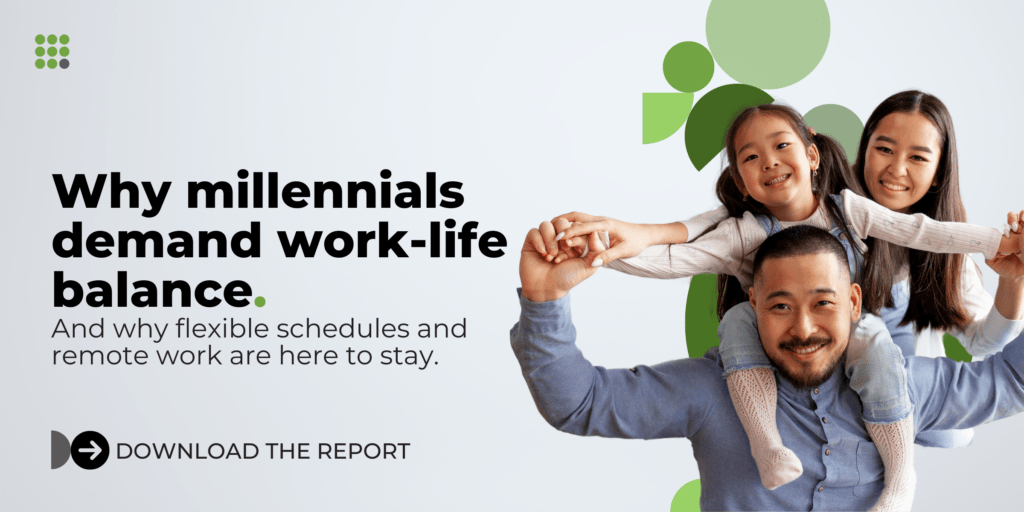

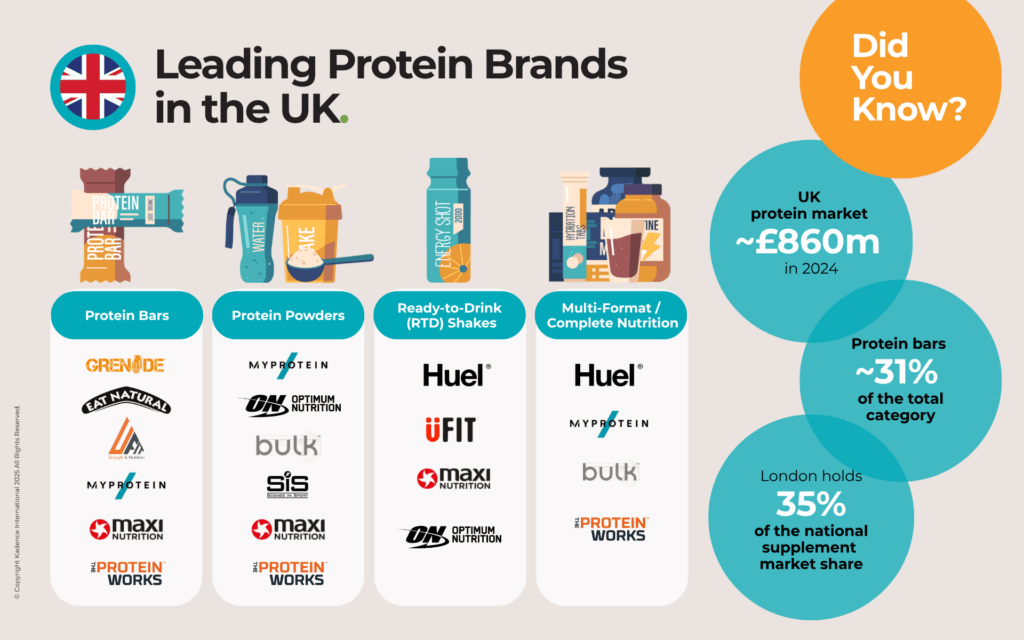



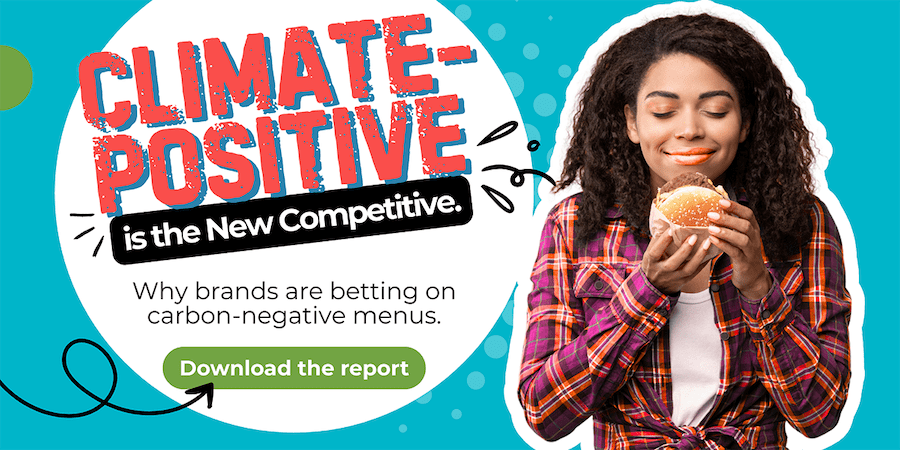


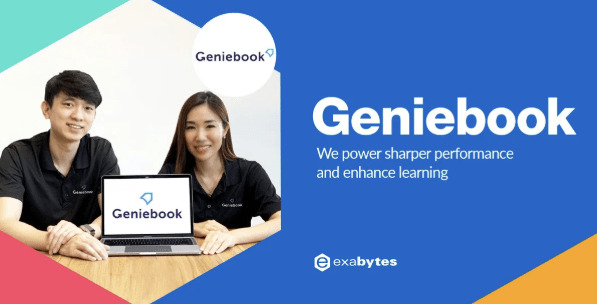

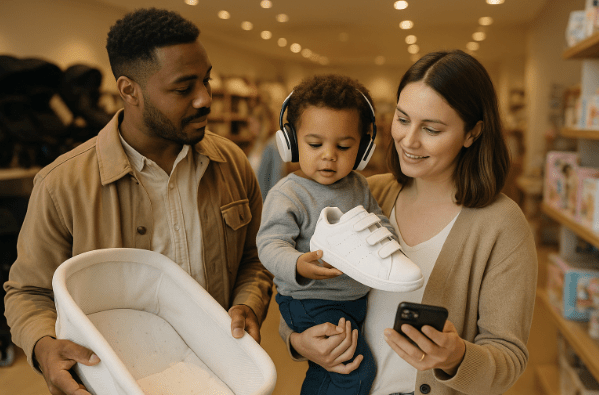









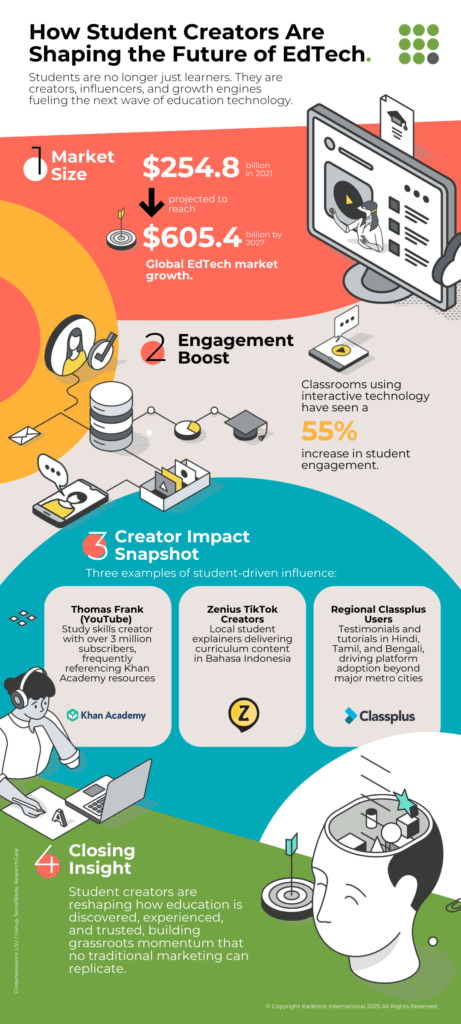

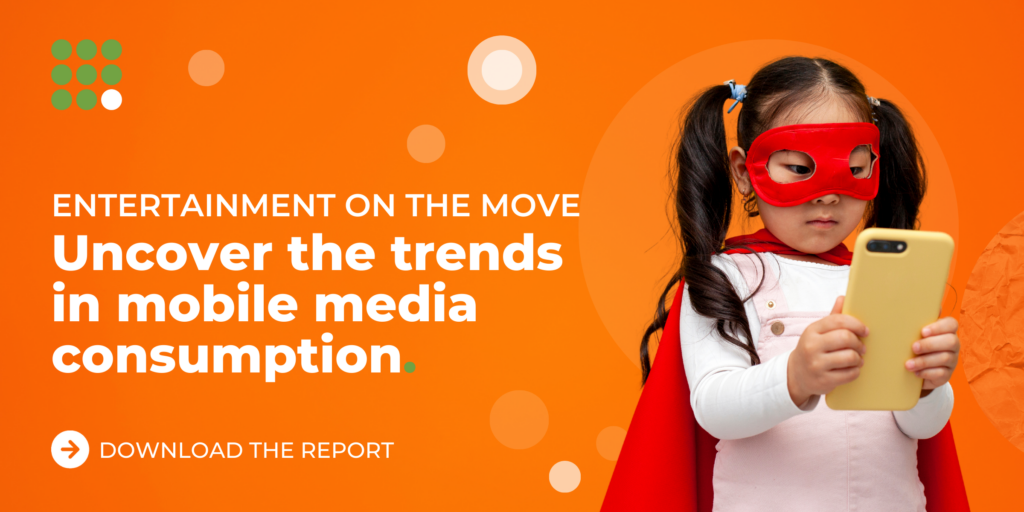

 Senior Marketing Executive
Senior Marketing Executive Sales & Marketing
Sales & Marketing General Manager PR -Internal Communications & Government Affairs
General Manager PR -Internal Communications & Government Affairs Vital Strategies
Vital Strategies
 Customer Intelligence Director
Customer Intelligence Director